
Introduction-
- Mohenjo-Daro, also known as the "Mound of the Dead," is located in the Sindh (Pakistan) district of Larkana, about 5 km from the Indus River.
- Mohenjo-Daro is a Sindh province archaeological site.
- It was one of the biggest settlements of the ancient Indus Valley Civilisation.
- It was constructed in 2500 BCE.
- It was one of the world's earliest big cities, coexisting with the civilizations of ancient Egypt, Mesopotamia, Minoan Crete, and Norte Chico.
- Mohenjo-Daro (the Mound of Mohen or Mohan) is the most common spelling, but other spellings are equally valid: Mohanjo-daro (Mound of Mohan = Krishna), Moenjo-daro (Mound of the Dead), Mohenjo-daro, Mohenjodaro, or even Mohen-jo-daro.
- From Manda in Jammu to Daimabad in Maharashtra, and from Sutkagen Dor in Balochistan near the Pakistan-Iran border to Rakhigarhi in Haryana's Hisar district, Indus Valley Civilization monuments have been unearthed throughout a large territory.
- Mohenjo Daro, along with Harappa, is the most well-known relic of the bronze period urban civilization (3300 BC to 1200 BC).
- Many sources still indicate that Mohenjo-daro is in India (probably referring to ancient India), while the site has been under the care of the Department of Archaeology and Museums, Government of Pakistan, since 1947.

- Mohenjo-daro was named a UNESCO World Heritage Site in 1980.
|
Indus Valley Civilization
Three phases of civilization
Civilizational centers The Indus civilization is known to have had two huge cities, Harappa and Mohenjo-Daro, as well as more than 100 towns and villages, many of which were tiny in size.
Features
|
Significance of Mohenjo Daro-
The site is significant because it is one of the biggest Indus Valley Civilization sites.
The location is noted for its complex urban planning, including street grids with brick pavements, established water supply, drainage, and covered sewage systems, toilet-equipped dwellings, and monumental structures.
It is the most visible example of urban planning in Harappan history.
Relationship with Harappa-
It is believed that their relationship is uncertain—whether the two cities were contemporaneous or if one city succeeded the other. But still, we can look at many things, like-
- Harappa and Mohenjo-Daro were two major cities that thrived in the Indus valley.
- The civilization was discovered through excavations at Harappa in west Punjab and Mohenjo-Daro in Sindh in the 1920s.
- The layout and planning of the twin cities were identical.
- These towns' remains demonstrate that the civilization was highly advanced, with knowledge of effective municipal governance and urban design.
- The urban plans for the cities incorporated the world's first urban sanitation systems.
- The towns had a robust wastewater management system that was far superior to what is available in many parts of India and Pakistan today.
- The townspeople had trading networks and kept animals. Nonetheless, by 1700 BC, this great society had vanished.
Town Planning and Structure
The city was separated into two sections:
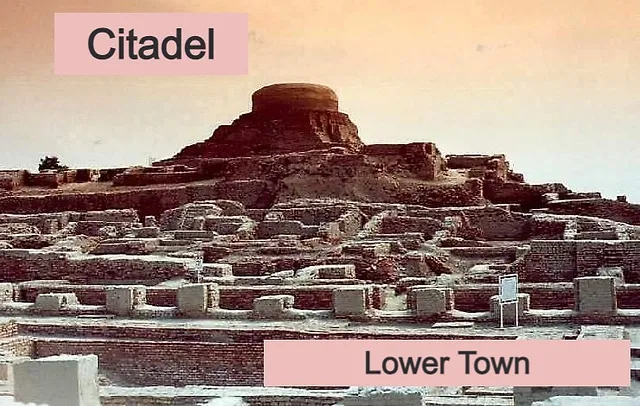
Citadel
- This was occupied by members of the ruling class.
- The citadel, or acropolis (as it clearly was), housed the site's religious and ceremonial center.
- It was the 12-meter-high mud-brick mound that housed public baths, a massive residential complex, and two big assembly rooms.
- A central market in the city center is flanked by residential residences and high-status multi-story dwellings with courtyards.
Lower town
- The lower town had enormous courtyard residences, indicating a sizable middle class.
- There were brick houses that were inhabited by the common people.
|
The houses in these cities followed a grid system. Reason: An interesting thing about the city was that the roads one across cut each other at almost right angles, which divides the city into blocks. |
Important public places of Mohenjo Daro-
- Great Bath
- It is the most well-known building.
- It is a brickwork marvel measuring 612 meters in length.
- It has a tank, which was situated in the citadel.
- It has steps on the north and south sides.
- There were side rooms to change clothes.
- The water for the bath came from a well in another room.
- The floor was built using bricks. To avoid water leaks, the floor and exterior walls were bituminized. There are open porches on all four sides of the bath.
- The ritual bath took place in the bath.
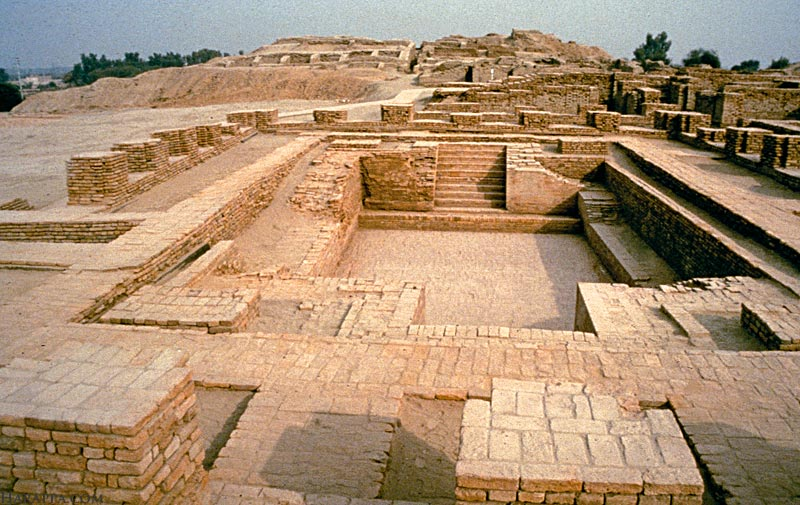
- Granary
- The largest building in Mohenjo Daro.
- It has 27 rooms of varying sizes and shapes.
- The Assembly Hall, a square pillared hall spanning 90 by 90 feet, was used for social gatherings.
- In the lower town, there were massive courtyard structures, indicating a sizable middle class.
Drainage system
The drainage system was quite impressive-
- Every house has a courtyard, a kitchen, and a well.
- All residences in Mohenjo-Daro have adequate lighting and drainage. Like the streets, most dwellings had modest bathrooms and were well-equipped with drainage and sanitation.
- Brick stairs, at the very least, imply an upper floor or a flat, habitable roof.
- Street drains were equipped with manholes.
Agriculture and animal domestication
The economy was built on domestic animals, mainly zebu cattle, and varied agriculture of grains, pulses, and other plants.
Rains and other natural water supplies supported cultivation in the region and also permitted cow grazing in Gujarat, Punjab, and the uplands of Balochistan, making mixed farming extremely profitable.
- Agriculture was entirely based on healthy soil and technological advances in farming practices. Wheat, barley, peas, lentils, linseed, and mustard seeds were sown in the winter, while millet, sesame, and rice were farmed in the summer. Because there was no monetary value for products at the time, people traded using the barter system.
- The irrigation system was utilized by the people to irrigate their crops. It enabled them to grow crops based on people's requirements, rather than the old traditional nomadic ways, and to use contemporary technology to meet the demands of the metropolis.
- Agriculture was so crucial to the Indus people that it was the only way for them to survive.
- Domesticated animals included goats, cows, and sheep. They made a living by making ceramics, weaving, and hunting. Some metals, such as gold, silver, and copper, were employed in finance. It was one of the primary reasons why the Indus Valley civilization survived for so long.
Sculptures
- Ivory, lapis, carnelian, and gold beads, as well as baked-brick city structures, attest to the city's wealth and status.
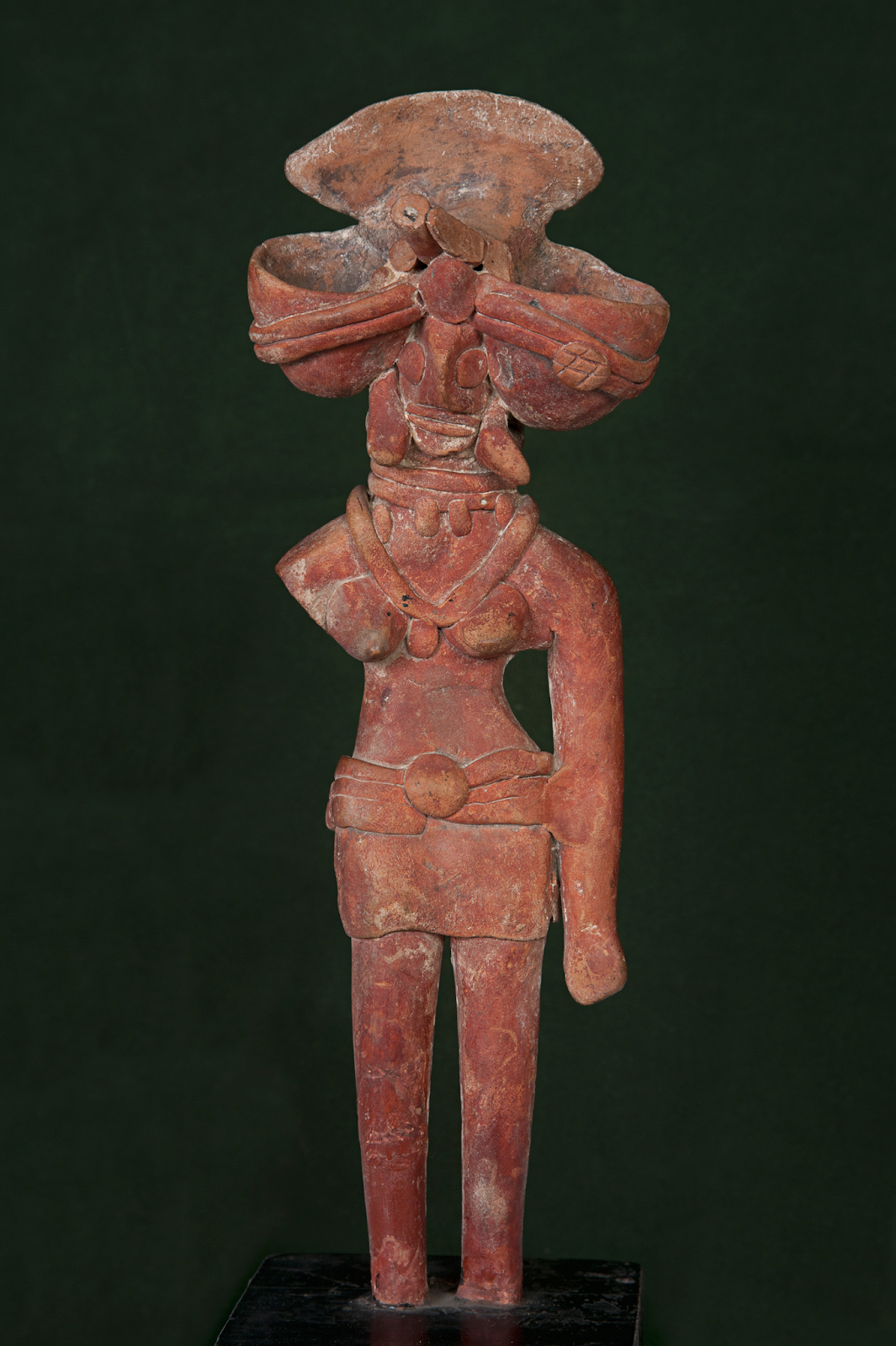
- Mother Goddess
- Among the most fascinating works of art produced by the Indus Valley Civilization. Handmade clay was used to create this sculpture.
- Its beginnings can be found in Mohenjodaro, Pakistan, around 2500 BCE.
- Priest King
- A miniature man figure was unearthed in steatite at Mohenjo-Daro, a wrecked Bronze Age metropolis.
- One of the uncommon stone sculptures is the capable head and shoulders of a bearded man with a low forehead, narrowing and slightly supercilious eyes, a fillet around the brow, and a cloak draped over the left shoulder and carved in relief with trefoils that were previously filled with crimson paste.
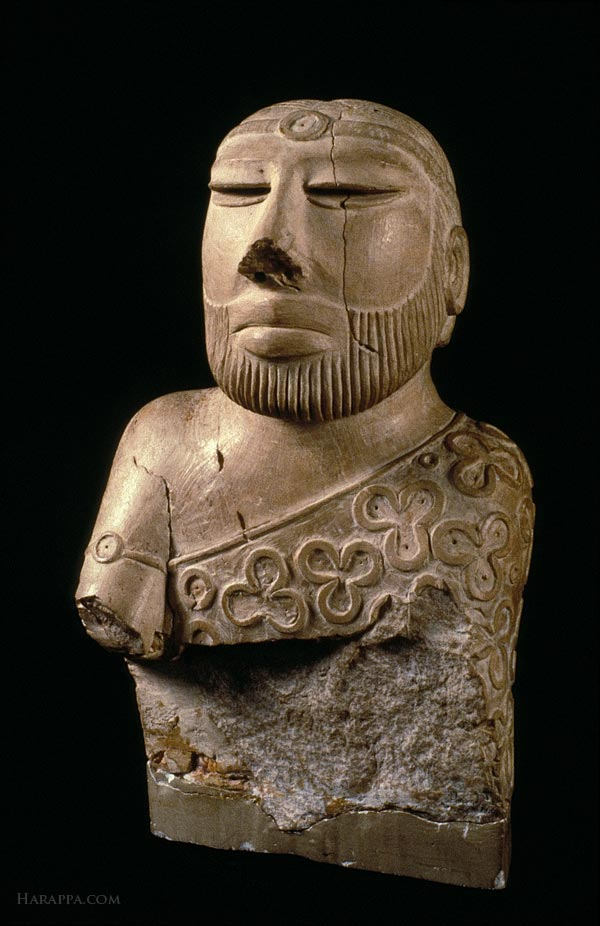
- Dancing Girl
- A prehistoric bronze sculpture constructed in lost wax casting approximately 2300-1750 BC at Mohenjo-Daro, one of the Indus Valley Civilisation's early sites.
- A well-known bronze of a young dancing girl, nude save for a sash.
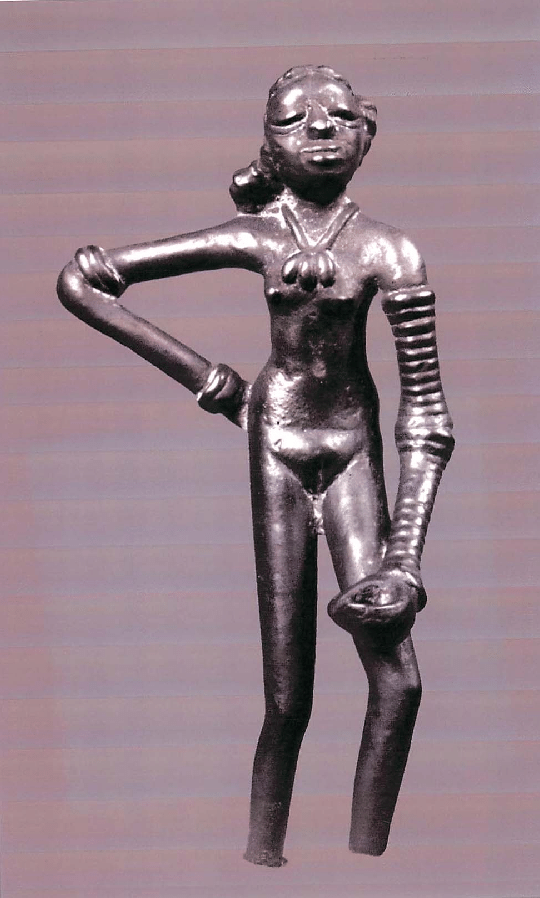
- Among the terra-cottas, little yet strong images of bulls and buffalo stand out.
- Female sculptures may have extravagant headdresses, while male and female miniatures of small, fat grotesques may display a caustic sense of comedy on occasion.
- The Pashupati Seal, also known as the "so-called" seal, is a steatite seal.
- A seal recovered at the site had the image of a seated, cross-legged, possibly ithyphallic figure surrounded by animals.
- Some scholars believe the artwork depicts a yogi, while others believe it depicts a three-headed "proto-Shiva" who lords over the animals.
Religious practices
- Terracotta figurines of women have been found here.
- One of the figurines shows the plant growing out of the female embryo.
- It is believed that it represents the goddess of earth and is connected with the origin and growth of plants.
- In Harappans, the earth has been seen as the fertility of a goddess and used to be worshipped like the Egyptians worship the Nile goddess “Isis”.
- Male Deities-
- This picture shows the seal of Pasupati.
- The god has three heads and a horn.
- He sits like a yogi whose one foot is on the other.
- The god is surrounded by an elephant, a tiger, a rhinoceros, a buffalo below his throne, and two deer at his feet.
- The animals surrounding the god are looking in four directions.
- The great bath of Mohenjo-Daro, or the much larger one recently discovered at the Dholavira site in Kutch, was most likely a prototype for temple ponds, or sacred tanks, found in ancient temples of southern India, where people could have taken purification baths or collectively participated in some kind of ritual bath on important occasions.
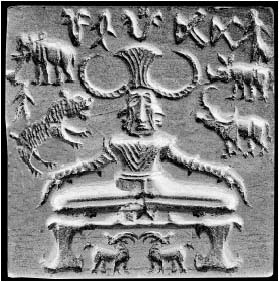
Major Excavations and Discoveries
- In 1922, Rakhal Das Banerji of the Archaeological Survey of India assessed Mohenjo Daro's ancient age, two years after significant excavations began at Harappa, 590 km to the north.
- Archaeologists Rakhaldas Banerji and Sir John Marshall made significant contributions to its discovery.
- Throughout the 1930s, large-scale excavations were conducted at the site under the leadership of John Marshall, K. N. Dikshit, Ernest Mackay, and several other directors.
- Its excavations uncovered the Great Bath, Great Granary, a big assembly hall, a temple-like building, Pashupati's seal, and a bust of a bearded man.
- Excavations at Mohenjo Daro began in 1920 and continued in phases until 1964-1965; even now, only a tiny section of the site has been examined.
- No temples, palaces, or monuments have been uncovered by archaeologists.
- In actuality, most other contemporary civilizations have some kind of significant monument.
- Despite the presence of granaries and public baths, historians assumed that the Indus Valley society was egalitarian due to the absence of a palace or temple.
- They might have built sacrificial altars using their knowledge of brick construction and geometric designs.
- The Indus Valley excavations have not turned up any altars or pits used for sacrifice, though.
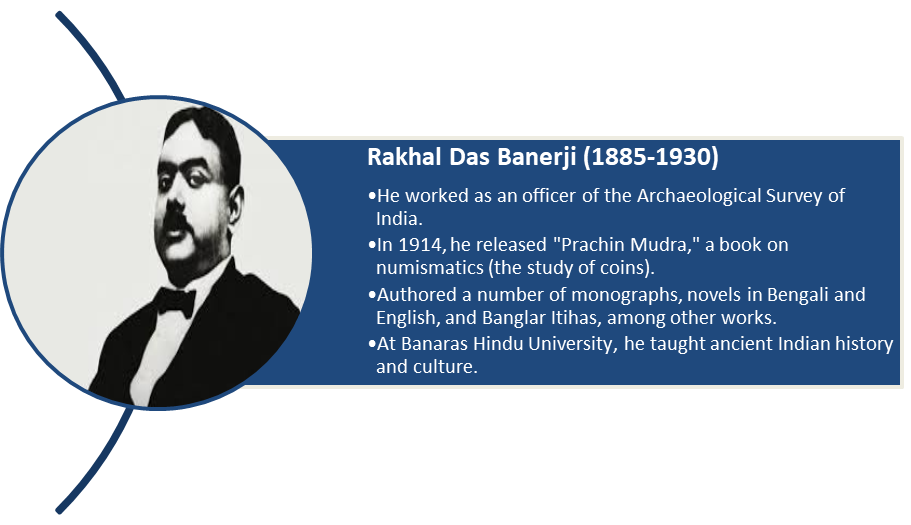
The decline of civilization
- It was at its peak in the Indus Valley between roughly 3,300 BC and 1,300 BC, with its "mature" period extending from 2,600 BC to 1,900 BC.
- In the middle of the second millennium BC, society began to crumble for unknown reasons, including severe climate change.
- Various hypotheses include:
- The Aryan invasion of IVC resulted in the civilization's demise.
- Historians blame the collapse of civilization on many tectonic disturbances and the shifting flow of the rivers.
- Various researchers argue that natural factors such as geological and climatic conditions are to blame for the demise.
